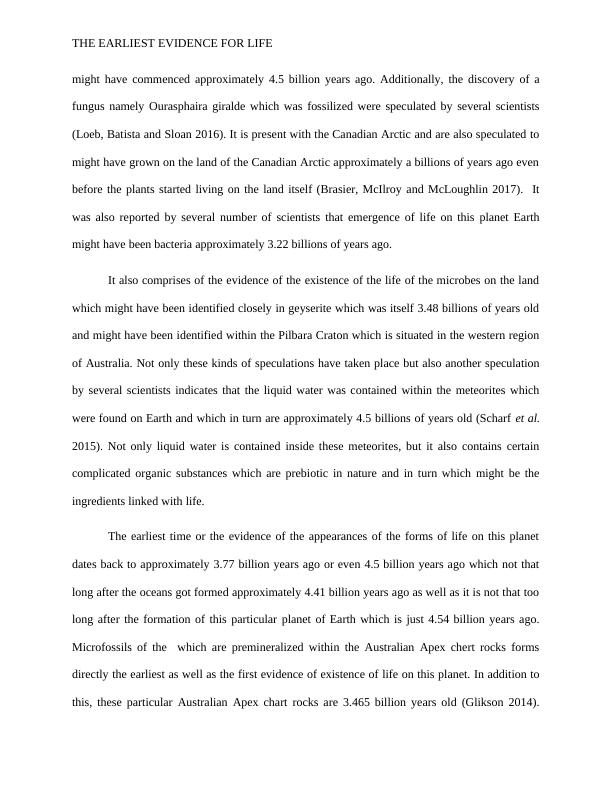THE EARLIEST EVIDENCE FOR LIFE
Essays should be between 1500 and 2000 words. The word limit should include the text, figure captions, footnotes, but not the reference list. The format of the essay is not specified. The essay should be written for a well-informed but non-specialist audience. The style used in popular science magazines such as Scientific American or New Scientist would be a suitable guide. Essays will be graded on degree of understanding of the topic, quality and depth of research, clarity of presentation, and original and outstanding coverage of the topic. Essays are expected to show evidence of researching the topic.
Added on 2022-08-20
THE EARLIEST EVIDENCE FOR LIFE
Essays should be between 1500 and 2000 words. The word limit should include the text, figure captions, footnotes, but not the reference list. The format of the essay is not specified. The essay should be written for a well-informed but non-specialist audience. The style used in popular science magazines such as Scientific American or New Scientist would be a suitable guide. Essays will be graded on degree of understanding of the topic, quality and depth of research, clarity of presentation, and original and outstanding coverage of the topic. Essays are expected to show evidence of researching the topic.
Added on 2022-08-20
End of preview
Want to access all the pages? Upload your documents or become a member.



